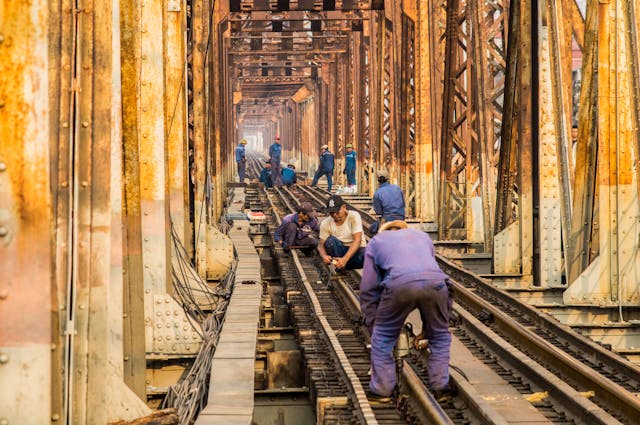
The major railroads in the United States used asbestos-containing brake shoes during the 1960s, 1970s, and early 1980s. The largest suppliers of these asbestos composition brake shoes were Railroad Friction Products (which made “Cobra” brake shoes), Abex Corporation and Griffin Wheel Company. It is important to remember that the hazards of asbestos exposure were widely discussed by the railroads going back to the 1930s at annual meetings sponsored by their own industry trade group, the Association of American Railroads (AAR). Over time, the railroads’ knowledge of asbestos hazards grew, and in 1958 railroad medical departments openly acknowledged that asbestos caused cancer. Similarly, the railroads were aware that the U.S. government had concluded that there was no safe level of exposure to asbestos and that any exposure, even at low levels, could cause cancer. Specifically, the Centers for Disease Control (CDC) warned that, “excessive cancer risks have been demonstrated at all fiber concentrations studied to date. Evaluation of all available human data provides no evidence for a threshold or a ‘safe’ level of asbestos exposure.”
Despite this awareness, the railroads generally did not train or warn employees about asbestos brake shoe dust. However, there was at least one notable exception. The Rock Island Lines Railroad warned employees about asbestos brake shoe residue dust starting in 1978. Specifically, the Rock Island warning to employees stated that:
“Employees who are exposed to brake shoe residue dust when changing brake shoes should wash their hands thoroughly before eating, and should wash work clothes and gloves frequently to ‘prevent possible accumulation of asbestos fibers that could be inhaled from their clothing. Employees who use tobacco while working should carry in well wrapped or closed container to prevent dust infiltration. Before using or handling tobacco, hands should be clean. Smoking in any form should be avoided while changing composition brake shoes to eliminate unnecessary inhalation.”
While this Rock Island warning was far from adequate because it did not even let employees know that asbestos was a carcinogen (cancer-causing substance), it was better than nothing. Also, this warning only covered certain employees, generally carmen and car department personnel, who changed brake shoes on railroad cars. It did not warn other employees who could be harmed by breathing in asbestos dust fibers which resulted from brake shoe dust created by braking applications to slow the train. During the 1960s and 1970s, railroad transportation crews consisted of 5 people: an engineer, fireman (engineer in training), conductor, brakeman (or possibly 2 brakemen) and a flagman. These transportation department employees would breathe in dust created by asbestos brake shoes during their normal application. Despite this potential hazardous exposure, railroad crews were not warned about these asbestos hazards.
Over many years of handling railroad employee cancer claims, Doran and Murphy PLLC has obtained copies of the safety rule books of almost all of the major railroads and their predecessors:
- New York Central
- Pennsylvania Railroad
- Penn Central
- Consolidated Rail Corporation (Conrail)
- Norfolk and Western Railway
- Southern Railway
- Nickel Plate
- Norfolk and Southern Railway
- Chessie System
- Louisville and Nashville
- Family Lines
- Seaboard Coastline
- CSX Transportation
- Missouri Pacific Railroad
- Southern Pacific Railroad
- Union Pacific Railroad
- Missouri-Kansas-Texas Railroad
- Texas and Pacific Railroad
- Chicago and North Western Railway
- Grand Trunk and Western Railroad
- Illinois Central Railroad
- Canadian National
- and other railroads
The sad fact is that none of these railroad safety rule books warn of the potential cancer hazards of asbestos exposure. The railroads’ decision not to warn their employees is evidence of negligence under the Federal Employers Liability Act (FELA) and makes them liable for any resulting cancers caused by asbestos exposure.
Various types of cancer have been linked to different railroad exposures, including mesothelioma, lung cancer, laryngeal cancer, esophageal cancer, throat cancer, bladder cancer, colon cancer, kidney cancer, stomach cancer, certain blood cancers such as AML and MDS, and other types of cancer.
If you or a family member suffer from cancer-related to hazardous exposures from working on the railroad, you may be entitled to compensation under the FELA. Call or email Doran & Murphy PLLC for a free consultation today.





